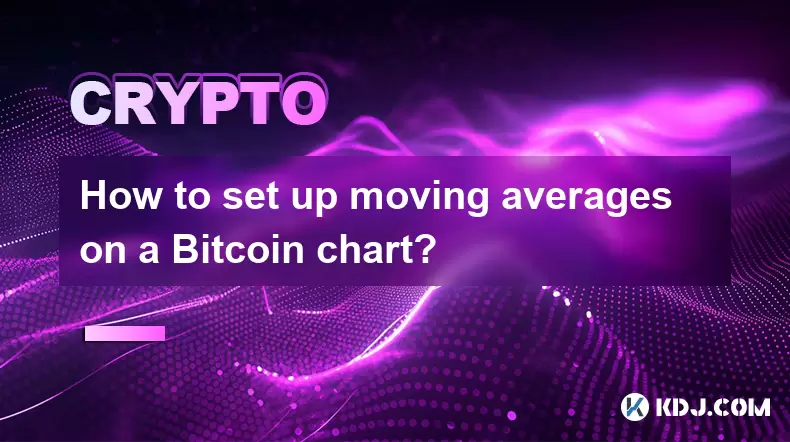-
 Bitcoin
Bitcoin $108,092.5658
-0.99% -
 Ethereum
Ethereum $2,546.4530
-1.12% -
 Tether USDt
Tether USDt $1.0000
0.01% -
 XRP
XRP $2.2676
0.12% -
 BNB
BNB $659.1616
-0.30% -
 Solana
Solana $148.8297
-1.97% -
 USDC
USDC $1.0000
0.02% -
 TRON
TRON $0.2874
-0.30% -
 Dogecoin
Dogecoin $0.1676
-3.64% -
 Cardano
Cardano $0.5765
-1.73% -
 Hyperliquid
Hyperliquid $37.2069
-6.18% -
 Bitcoin Cash
Bitcoin Cash $497.9918
-0.10% -
 Sui
Sui $2.8427
-2.26% -
 Chainlink
Chainlink $13.2689
-2.06% -
 UNUS SED LEO
UNUS SED LEO $9.0541
0.15% -
 Stellar
Stellar $0.2487
-0.92% -
 Avalanche
Avalanche $17.7710
-3.09% -
 Shiba Inu
Shiba Inu $0.0...01167
-1.28% -
 Toncoin
Toncoin $2.7488
-2.80% -
 Hedera
Hedera $0.1559
-2.28% -
 Litecoin
Litecoin $85.8945
-2.48% -
 Monero
Monero $316.0985
-2.09% -
 Dai
Dai $1.0001
0.02% -
 Polkadot
Polkadot $3.3481
-1.83% -
 Ethena USDe
Ethena USDe $1.0000
0.00% -
 Bitget Token
Bitget Token $4.2910
-3.04% -
 Uniswap
Uniswap $7.4131
-0.09% -
 Aave
Aave $280.9266
-2.67% -
 Pepe
Pepe $0.0...09816
-3.18% -
 Pi
Pi $0.4557
-2.29%
How to set up moving averages on a Bitcoin chart?
Jul 08, 2025 at 04:22 am

What are Moving Averages and Why Are They Important for Bitcoin Trading?
Moving Averages (MAs) are one of the most commonly used technical indicators in cryptocurrency trading. For Bitcoin traders, they help smooth out price data over a specified time period to identify trends more clearly. By filtering out short-term volatility, moving averages allow traders to spot potential entry or exit points.
There are several types of moving averages, including Simple Moving Average (SMA), Exponential Moving Average (EMA), and Weighted Moving Average (WMA). Each has its own calculation method and sensitivity to recent price changes. In Bitcoin trading, where price swings can be dramatic, understanding how to apply these tools correctly is crucial.
Selecting the Right Charting Platform
Before setting up moving averages, you must choose a reliable charting platform that supports technical analysis. Popular platforms include TradingView, Binance, CoinMarketCap, and Kraken. Most of these platforms offer built-in tools for adding moving averages directly onto your Bitcoin price chart.
To get started, log into your chosen platform and navigate to the Bitcoin price chart. Look for a section labeled “Indicators” or “Studies.” This is where you will find options to add various technical tools, including moving averages. Some platforms may require you to enable advanced charting features if they aren’t visible by default.
Adding a Simple Moving Average (SMA)
Once you’re on the Bitcoin chart, locate the indicator menu and search for “Simple Moving Average” or simply “SMA”. Click on it to add it to your chart. You’ll usually see customizable settings such as the period, which determines how many past data points the average will consider.
For example, selecting a 50-period SMA means the average is calculated using the last 50 candlesticks (or whatever timeframe you’re viewing). Common periods used by traders are 9, 20, 50, 100, and 200. After choosing your desired period, adjust the color and line style so it stands out against the price candles.
Some platforms also let you set the applied price, such as close, open, high, or low. Most traders use the closing price because it reflects the final sentiment of the market during each candlestick.
Configuring an Exponential Moving Average (EMA)
The Exponential Moving Average (EMA) gives more weight to recent prices, making it more responsive to new information compared to the SMA. To add an EMA, go back to the indicator menu and search for “Exponential Moving Average” or “EMA”.
Similar to the SMA, you’ll need to configure the period, line color, and applied price. Traders often combine EMAs with SMAs to confirm trends. For instance, a golden cross occurs when a short-term EMA crosses above a long-term SMA, signaling a potential bullish trend.
It’s important to note that shorter EMA periods react faster to price changes but can produce more false signals. Longer periods are smoother but lag behind actual price movements. Finding the right balance depends on your trading strategy and time horizon.
Customizing Multiple Moving Averages on One Chart
Many traders use multiple moving averages simultaneously to gain deeper insights. For example, the “Moving Average Ribbon” strategy involves plotting several MAs with different periods to visualize trend strength and momentum shifts.
To do this, add multiple SMAs or EMAs to your Bitcoin chart with varying periods. A common setup includes 8, 21, and 55 EMA or 9, 21, and 50 SMA. Each should have a distinct color and thickness for clarity. When these lines converge or diverge, it can indicate potential trend reversals or continuations.
Also, pay attention to how price interacts with these averages. If Bitcoin consistently trades above a key MA like the 200-day SMA, it may signal a long-term uptrend. Conversely, if it remains below, it could suggest a bearish phase.
Interpreting Crossovers and Divergences
One of the most popular strategies involving moving averages is the crossover method. This occurs when a short-term MA crosses above or below a longer-term MA. A bullish crossover happens when the short-term line moves above the long-term line, suggesting upward momentum. A bearish crossover occurs when the short-term line drops below, indicating possible downward movement.
Traders also watch for price crossovers with a single moving average. For example, if Bitcoin closes above its 50-day EMA, some traders interpret this as a buy signal. Conversely, a close below might be seen as a sell signal.
Divergence between price and moving averages can also provide valuable clues. If Bitcoin makes a new high but the moving average doesn’t confirm it, this could signal weakening momentum and an impending reversal.
Frequently Asked Questions
Q: Can I set up moving averages on mobile apps?
Yes, most major trading platforms like Binance, Kraken, and TradingView offer mobile apps that support adding moving averages. The process is similar to desktop—navigate to the Bitcoin chart, open the indicators menu, and select the desired MA type and settings.
Q: Which moving average is best for intraday Bitcoin trading?
For intraday trading, shorter-period EMAs like 9 or 21 are commonly used due to their responsiveness. Many day traders combine them with volume indicators to filter out false signals and improve accuracy.
Q: How do I reset or remove a moving average from my chart?
Most platforms allow you to edit or delete indicators via the same indicator menu where you added them. Simply click on the gear icon next to the MA name and choose “Remove” or “Reset.”
Q: Do moving averages work well in sideways Bitcoin markets?
In ranging or sideways markets, moving averages may generate misleading signals due to frequent crossovers without strong trends. It’s advisable to combine them with other tools like support/resistance levels or oscillators (e.g., RSI) for better decision-making.
Clause de non-responsabilité:info@kdj.com
Les informations fournies ne constituent pas des conseils commerciaux. kdj.com n’assume aucune responsabilité pour les investissements effectués sur la base des informations fournies dans cet article. Les crypto-monnaies sont très volatiles et il est fortement recommandé d’investir avec prudence après une recherche approfondie!
Si vous pensez que le contenu utilisé sur ce site Web porte atteinte à vos droits d’auteur, veuillez nous contacter immédiatement (info@kdj.com) et nous le supprimerons dans les plus brefs délais.
-
 ICNT Échangez maintenant
ICNT Échangez maintenant$0.3182
30.31%
-
 M Échangez maintenant
M Échangez maintenant$0.2011
23.43%
-
 SOLO Échangez maintenant
SOLO Échangez maintenant$0.3788
17.55%
-
 HSK Échangez maintenant
HSK Échangez maintenant$0.7010
17.49%
-
 SHX Échangez maintenant
SHX Échangez maintenant$0.0116
15.42%
-
 COREUM Échangez maintenant
COREUM Échangez maintenant$0.1392
8.59%
- Bitcoin Solaris Market Launch: A New Dawn or Just Another Altcoin?
- 2025-07-08 20:30:12
- Bitcoin, Memecoin Mania, and the All-Time High Hunt: What's Next?
- 2025-07-08 20:30:12
- Byrq Coin: Scam or Savior? A Deep Dive Review
- 2025-07-08 20:50:12
- Shiba Inu's Burn Rate Bonanza: Can Crypto Burns Ignite a Price Rally?
- 2025-07-08 20:50:12
- Telekom, injectif et validateurs: une plongée profonde dans la sécurité et la croissance du réseau
- 2025-07-08 21:10:12
- ROM: Golden Age - un demi-million de pré-registrations et un butin crypto!
- 2025-07-08 21:15:12
Connaissances connexes

How to identify a volatility contraction pattern on Bitcoin using indicators?
Jul 07,2025 at 07:28am
<h3>What is a Volatility Contraction Pattern in Bitcoin Trading?</h3><p>A volatility contraction pattern refers to a phase where the...

Do indicators work better on a logarithmic or linear scale for Bitcoin's long-term chart?
Jul 08,2025 at 01:42pm
<h3>Understanding Chart Scales in Cryptocurrency Trading</h3><p>In cryptocurrency trading, particularly for analyzing Bitcoin's long...

What is the Woodies CCI indicator and can it be used for Bitcoin?
Jul 04,2025 at 05:14pm
<h3>Understanding the Woodies CCI Indicator</h3><p>The Woodies CCI indicator is a variation of the traditional Commodity Channel Ind...

How to use indicators to trade the opening range breakout for Bitcoin CME futures?
Jul 05,2025 at 07:35pm
<h3>What Is the Opening Range Breakout Strategy?</h3><p>The opening range breakout (ORB) strategy is a popular trading technique use...

How to use the Relative Vigor Index (RVI) for Bitcoin trading?
Jul 07,2025 at 02:00pm
<h3>Understanding the Relative Vigor Index (RVI)</h3><p>The Relative Vigor Index (RVI) is a technical analysis tool used to assess t...

What does a bearish cross on the Stochastic RSI mean for Bitcoin?
Jul 05,2025 at 07:18pm
<h3>Understanding the Stochastic RSI Indicator</h3><p>The Stochastic RSI (Relative Strength Index) is a momentum oscillator used in ...

How to identify a volatility contraction pattern on Bitcoin using indicators?
Jul 07,2025 at 07:28am
<h3>What is a Volatility Contraction Pattern in Bitcoin Trading?</h3><p>A volatility contraction pattern refers to a phase where the...

Do indicators work better on a logarithmic or linear scale for Bitcoin's long-term chart?
Jul 08,2025 at 01:42pm
<h3>Understanding Chart Scales in Cryptocurrency Trading</h3><p>In cryptocurrency trading, particularly for analyzing Bitcoin's long...

What is the Woodies CCI indicator and can it be used for Bitcoin?
Jul 04,2025 at 05:14pm
<h3>Understanding the Woodies CCI Indicator</h3><p>The Woodies CCI indicator is a variation of the traditional Commodity Channel Ind...

How to use indicators to trade the opening range breakout for Bitcoin CME futures?
Jul 05,2025 at 07:35pm
<h3>What Is the Opening Range Breakout Strategy?</h3><p>The opening range breakout (ORB) strategy is a popular trading technique use...

How to use the Relative Vigor Index (RVI) for Bitcoin trading?
Jul 07,2025 at 02:00pm
<h3>Understanding the Relative Vigor Index (RVI)</h3><p>The Relative Vigor Index (RVI) is a technical analysis tool used to assess t...

What does a bearish cross on the Stochastic RSI mean for Bitcoin?
Jul 05,2025 at 07:18pm
<h3>Understanding the Stochastic RSI Indicator</h3><p>The Stochastic RSI (Relative Strength Index) is a momentum oscillator used in ...
Voir tous les articles

























































































